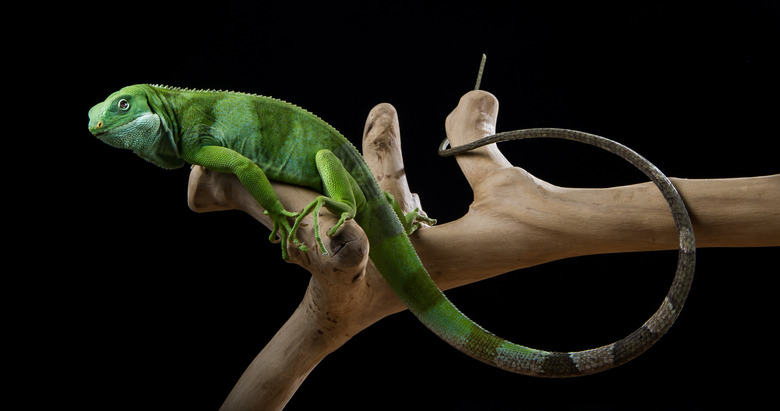The Types Of Tropical Lizards
Lizards are a type of reptile in the order Squamata alongside snakes (Serpentes) and the worm-like amphisbaenians (Amphisbaenidae). The class Reptilia also contains the New Zealand tuatara (Sphenodontia), turtles (Testudinata) and crocodiles (Crocodilia). There are over 4,675 described lizards species around the world. Lizards can be found in every continent except Antarctica.
Rainforest Reptiles
Rainforest Reptiles
Reptiles are ectothermic meaning they rely on their environment to control their body temperature. Ectotherms differ from endothermic mammals which can control their own internal temperatures. The heat of tropical rainforests makes it an ideal environment for animals such as tropical rainforest snakes and lizards that **rely on the external environment for heat.**
Tropical rainforests are located up to 28 degrees on either side of the equator. Tropical rainforests are located in Central and South America, Mexico, Asia, Africa, Australia and the Pacific Islands. Rainforests are typically very wet places and are well known for being hotspots of biodiversity. Unfortunately, habitat destruction and the illegal pet trade threaten tropical reptiles today.
What Are Lizards?
What Are Lizards?
Lizards can be typically distinguished from other members of the Squamata order by their four legs, moveable eyelids and external ear openings. There are a wide variety of sizes, patterns, shapes and colorful lizard species. Types of lizards found in tropical environments include geckos (Gekkota), skinks (Scincidae), chameleons (Chamaeleonidae), iguanas (Iguanidae) and monitors (Varanidae).
Lizard Reproduction
Lizard Reproduction
Courtship behaviors vary between species. One thing lizards have in common is **internal fertilization.** Once eggs are fertilized, most reptiles lay them, and the eggs incubate outside the mother. Some lizards are considered viviparous meaning the mother keeps her eggs inside her during development and births live young. The Northern death adders (Acanthophis praelongus) that live in tropical regions of Australia are considered viviparous.
Most lizards do not care for their young. However, some species will guard their nests for some time. The largest of all living lizards, the Komodo Dragon (Varanus komodoensis), which lives in the tropical Indonesian islands of Komodo, guards her nest for three months and creates decoy nests to protect her young from predators.
Tropical Lizard Diets
Tropical Lizard Diets
Some lizards are exclusively herbivorous; others live off insects while some are omnivorous and others carnivorous. What lizards eat depends on their location and size. The Komodo dragon can feast on deer while the tiny Malagasy leaf chameleons (Brookesia minima spp.) found in tropical Madagascar can only eat tiny insects.
Tropical lizards have a range of adaptations to source their food. Marine iguanas (Amblyrhynchus cristatus) of the Galapagos islands are an excellent example of herbivorous tropical lizards. These iguanas have evolved the ability to dive into the tides and feast on seaweeds. Chameleons also have a unique adaptation; They have evolved an extremely fast, sticky tongue to catch their insect prey.
Unique Tropical Lizards
Unique Tropical Lizards
With a high biodiversity in the tropics, lizards have had to adapt to fill niche ecological roles to survive. The evolution of unique body forms helps them to hunt prey, escape predators and assist thermoregulation.
Legless Lizards (Delma mitella)
Legless Lizards (Delma mitella)
These lizards are an exception to the "you can tell lizards and snakes apart based on the fact that lizards have four limbs" rule. These rare legless lizards of tropical Australia and New Guinea lack forelimbs and can be identified by their flap-like hindlimbs. This species of legless lizard reaches a massive 75 cm long.
Frilled Lizard (Chlamydosaurus kingii)
Frilled Lizard (Chlamydosaurus kingii)
Seeing a frightened frilled lizard of Northern and Eastern Australia is a reminder of the dinosaurs in Jurassic Park. When threatened, they puff out their frilled collar and run away on their hind legs. Their frills also help with thermoregulation.
Basilisk lizards (Basiliscus plumifrons)
Basilisk lizards (Basiliscus plumifrons)
Basilisk lizards, also known as Jesus Christ Lizards, get their name from their uncanny ability to run on the surface of the water. These Central American lizards usually live in the trees, but when threatened by a predator, they drop onto the water below them and flee to safety on their hind limbs before swimming with all their limbs. Researchers have found that the slap-motion basilisk lizards make with their feet on the surface of the water creates an air pocket which keeps them afloat.
References
- Encyclopaedia Britannica: Reptile
- Encylopaedia Britannica: Lizard
- San Diego Zoo: Lizard
- San Diego Zoo: Komodo Dragon
- PLOS ONE: Discovery of Miniaturized and Microendemic New Species of Leaf Chameleons (Brookesia) from Northern Madagascar
- WWF: Tropical Rainforests
- Wet Tropics Management Authority: Reptiles of the Wet Tropics
- National Geographic: How 'Jesus Lizards' Walk on Water
Cite This Article
MLA
Jerrett, Adrianne. "The Types Of Tropical Lizards" sciencing.com, https://www.sciencing.com/types-tropical-lizards-8415634/. 22 November 2019.
APA
Jerrett, Adrianne. (2019, November 22). The Types Of Tropical Lizards. sciencing.com. Retrieved from https://www.sciencing.com/types-tropical-lizards-8415634/
Chicago
Jerrett, Adrianne. The Types Of Tropical Lizards last modified August 30, 2022. https://www.sciencing.com/types-tropical-lizards-8415634/
